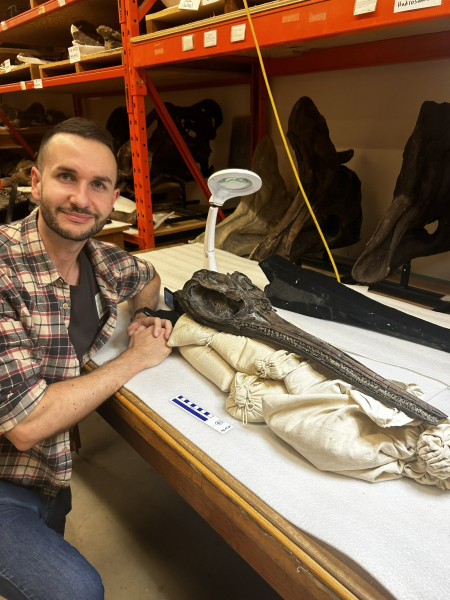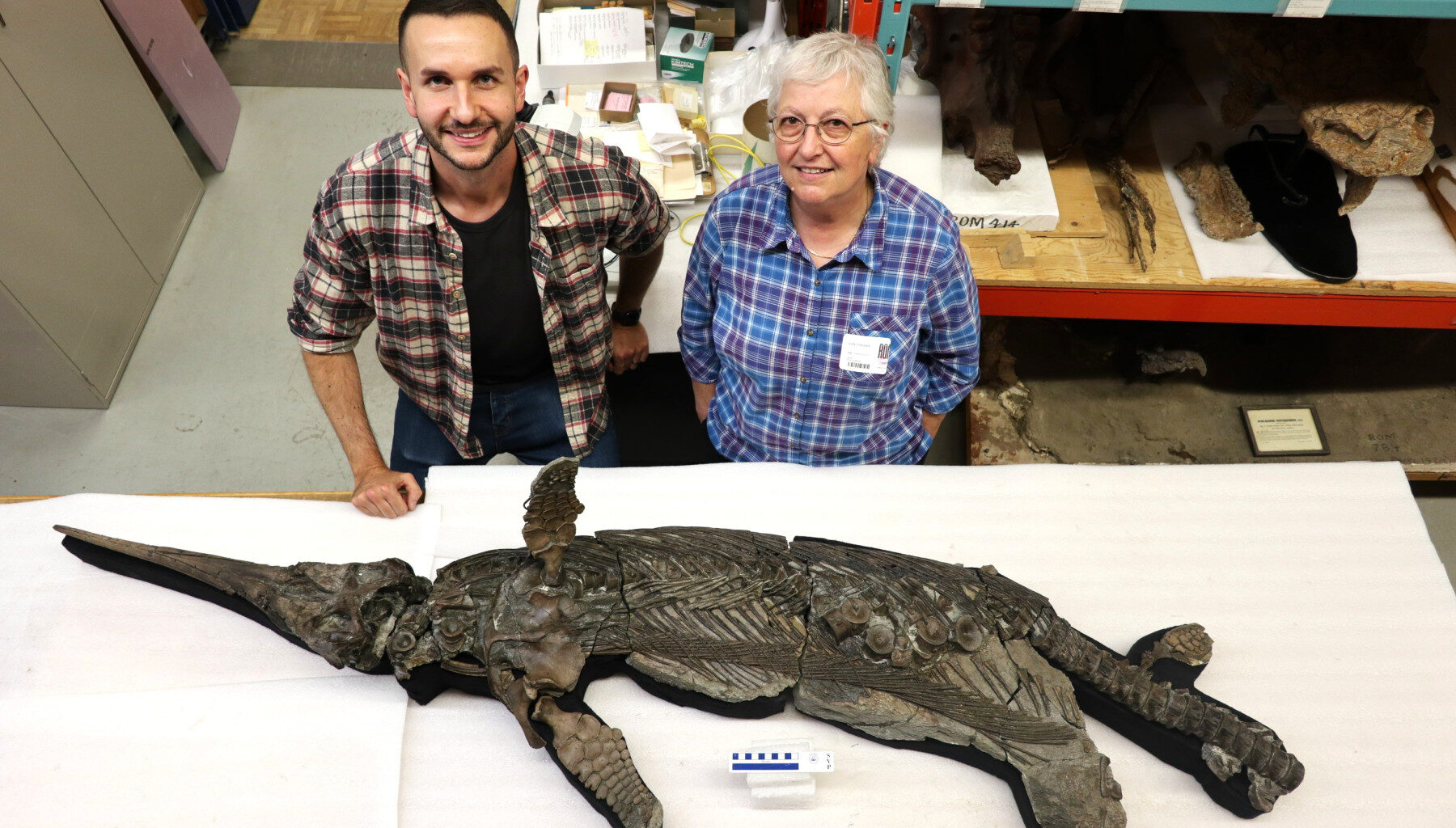Discovered near Golden Cap in 2001 by Dorset fossil collector Chris Moore, the fossil is almost perfectly preserved in three dimensions. The skeleton includes a skull with enormous eye socket and a long sword-like snout. The scientists say the animal would have been about three metres long and would have dined on fish and squid. The remains even show what may be traces of its last meal. It is probably the world’s most complete prehistoric reptile from the Pliensbachian period.
The finding has been described by a trio of international palaeontologists, led by ichthyosaur expert Dr Dean Lomax, an Honorary Research Fellow at The University of Manchester and an 1851 Research Fellow at the University of Bristol, in the journal Papers in Palaeontology today.
 Dr Lomax said: “I remember seeing the skeleton for the first time in 2016. Back then, I knew it was unusual, but I did not expect it to play such a pivotal role in helping to fill a gap in our understanding of a complex faunal turnover during the Pliensbachian. This time is pretty crucial for ichthyosaurs as several families went extinct and new families emerged, yet Xiphodracon is something you might call a “missing piece of the ichthyosaur puzzle”. It is more closely related to species in the later Early Jurassic (in the Toarcian), and its discovery helps pinpoint when the faunal turnover occurred, being much earlier than expected.”
Dr Lomax said: “I remember seeing the skeleton for the first time in 2016. Back then, I knew it was unusual, but I did not expect it to play such a pivotal role in helping to fill a gap in our understanding of a complex faunal turnover during the Pliensbachian. This time is pretty crucial for ichthyosaurs as several families went extinct and new families emerged, yet Xiphodracon is something you might call a “missing piece of the ichthyosaur puzzle”. It is more closely related to species in the later Early Jurassic (in the Toarcian), and its discovery helps pinpoint when the faunal turnover occurred, being much earlier than expected.”
After its discovery in 2001, the skeleton was acquired by the Royal Ontario Museum, Canada, where it became part of their extensive collection of ichthyosaurs but had remained unstudied.
Ichthyosaurs from the Pliensbachian (193–184 million years ago) are incredibly rare and makes Xiphodracon a vital piece of evidence for scientists studying the critical but poorly understood time in ichthyosaurian evolution.
Ichthyosaur expert and co-author, Professor Judy Massare, from the State University of NY at Brockport, USA, said: “Thousands of complete or nearly complete ichthyosaur skeletons are known from strata before and after the Pliensbachian. The two faunas are quite distinct, with no species in common, even though the overall ecology is similar. Clearly, a major change in species diversity occurred sometime in the Pliensbachian. Xiphodracon helps to determine when the change occurred, but we still don’t know why.”
Dr Erin Maxwell, a co-author and ichthyosaur expert from the State Museum of Natural History Stuttgart, added: “This skeleton provides critical information for understanding ichthyosaur evolution, but also contributes to our understanding of what life must have been like in the Jurassic seas of Britain. The limb bones and teeth are malformed in such a way that points to serious injury or disease while the animal was still alive, and the skull appears to have been bitten by a large predator – likely another much larger species of ichthyosaur- giving us a cause of death for this individual. Life in the Mesozoic oceans was a dangerous prospect.”
‘;
